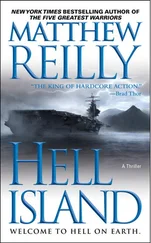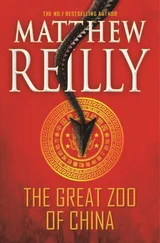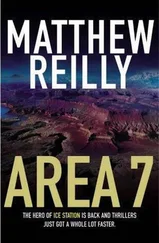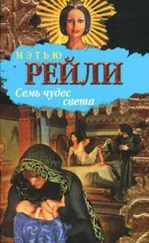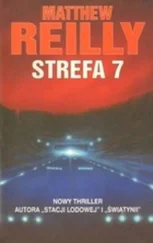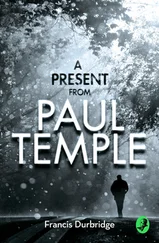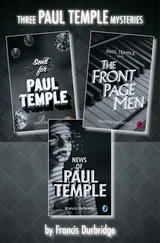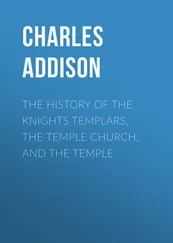‘Why don’t we just shoot them?’ Copeland whispered.
‘I wouldn’t go doing that too quickly,’ Van Lewen replied. ‘At the moment, I think their dislike of monkey urine overrides their desire to kill us. If we open fire on them, I think it’s likely that their desire to survive will override their dislike of monkey urine.’
The eight of them made their way up the riverside path and into the narrow fissure in the plateau, the rapas following them at a distance. They emerged from the passageway at the bottom of the crater and saw the shallow lake stretching away from them, with the rock tower soaring into the sky from its centre and the thin but incredibly tall waterfall pouring down from the southwest corner of the canyon. For once it wasn’t raining, and the full moon shone down on the crater with all its strength, bathing it in a kind of mystical blue light. Led by Van Lewen, they climbed the spiralling path, up into the night. The rapas slunk their way up the spiralling path behind them. With their dark black heads and high pointed ears, they looked like demons climbing up out of Hell itself, ready to yank Race and his companions down into the depths of the earth should any of them make one false step. But ultimately they just kept their distance, put off by the smell of the monkey urine. At last the group came to the two buttresses that had once held up the rope bridge. The rope bridge itself now lay flat against the wall of the tower on the other side of the ravine, exactly where the Nazis had left it. Race looked across at the tower top. There was no sign of Buzz Cochrane anywhere. Then, however, instead of crossing over onto the rock tower which, at present, they couldn’t do anyway—Van Lewen led them further up the spiralling path, toward the rim of the crater. The path slid around and behind the thin waterfall at the southwestern corner before it rose dramatically, arriving at the rim of the crater. Race stepped up onto the rim and looked westward— and saw the majestic peaks of the Andes towering above him, dark triangular shadows superimposed on the night sky. Off to his left, he saw the small river that fed the thin waterfall and alongside it, a section of dense rainforest. A narrow muddy path—created by constant use rather than any deliberate design—ran away from him into the thick green foliage. But it was what sat on either side of the slender path that seized his immediate attention—a pair of wooden stakes, driver into the mud. Impaled on each stake was a fearsome looking skull. Race felt a chill as he shone his barrel mounted flashlight onto one of the skulls. It looked utterly horrific—an effect magnified by the copious amounts of fresh blood and rotting flesh that dangled from its sides. It was oddly shaped too—definitely not human. Rather, both skulls were strangely elongated, with sharp canine teeth, inverted triangular nostrils and wide eye sockets. Race swallowed hard. They were feline skulls. They were rapa skulls.
“A primitive “Keep Out” sign,’ Krauss said, looking at the two filthy skulls impaled on the stakes.
‘I don’t think they’re meant to keep people out,’ Gaby Lopez said, sniffing one of the skulls. ‘They’ve been drenched in monkey urine. They’re designed to keep the cats away.’
Van Lewen stepped past the skulls and pressed on into the dense foliage. Race and the others followed him, guided by the beams of their flashlights. About thirty yards beyond the two skulls, Van Lewen and Race came to a wide moat not unlike the one that surrounded Vilcafor. The only differences between the two moats were, firstly, that this moat wasn’t dried up— rather, it was filled with .water, the surface of which lay about fifteen feet below the rim of the moat. And secondly, it was inhabited by a family of very large caimans.
‘Great,’ Race said as he watched the giant crocodilians prowling around the bottom of the moat.
‘Caimans again.’
‘Another defensive mechanism?’ Renée asked.
‘Caimans are the only animals in this area with even a remote chance of defeating a rapa in a fight,’ Krauss said. ‘Primitive tribes do not have rifles or trip wires, so they look for other methods of keeping their feline enemies at bay.’
Beyond the moat—completely surrounded by it—Race saw another section of low foliage, beyond which lay a small collection of thatch huts nestled underneath a stand of tall trees. It was a village of some sort. The short stretch of foliage lay between the village and the moat, gave the cluster of primitive huts a quaint, almost mystical look. Some torches burned on high sticks, bathing the little town in a haunting orange glow. Apart from the burning torches, however, the village appeared to be completely deserted. A twig snapped. Race spun, and immediately saw the pack of rapas standing on the muddy pathway about ten yards behind his group. Somehow, they had managed to get past the urine soaked skulls and now they were standing a short distance behind Race and the others—watching, waiting. A narrow log bridge lay flat on the ground on the village side of the moat. A length of rope was attached to one end of it in a manner not unlike that which had applied to the rope bridge down at the rock tower. It stretched out over the moat to Race’s side, where it was tied to a stake in the ground. Van Lewen and Doogie pulled on the rope, manoeuvred the log bridge into position so that it now spanned the moat. The eight of them then crossed the bridge and entered the section of low foliage surrounding the village. Once they were all over the bridge, Van Lewen and Doogie quickly pulled it back onto the village side of the moat, so that the rapas could not follow them oven They all came out from the foliage together, emerging onto a wide, town squarelike clearing. They cast the beams of their flashlights over the thatch huts and tall trees that surrounded the bare dirt clearing. At the northern end of the square stood a bamboo cage, its four corners comprised of four thick tree trunks. Beyond the cage—carved out of the muddy wall of the moat—was a large pit about thirty feet square and fifteen feet deep. A crisscrossing bamboo gate separated the pit from the moat itself. In the very centre of the town square, however, stood the most arresting sight of all. It was a shrine of some sort, a large wooden altar-like structure that had been carved out of the trunk of the widest tree in the village. It was filled with nooks and small alcoves. Inside the alcoves Race saw a collection of relics that was nothing short of spectacular—a golden crown embedded with sapphires, silver and gold statues of Incan warriors and maidens, various stone idols, and one gigantic ruby that was easily the size of a man’s fist. Even in the semidarkness, the shrine shone, its treasures glistening in the moonlight. Dense clusters of leaves hung down from the trees around it, framing it on either side like curtains in a theatre. In the very centre of the wooden shrine—right where its heart would have been—sat the most elaborate nook of all. It was covered by a small curtain and was quite obviously the centrepiece of the whole altar. But whatever occupied it lay hidden from view. Nash strode directly over to it. Race knew what he was thinking. With a sharp yank, Nash pulled the curtain covering the nook aside. And he saw it. Race saw it too, and gasped. It was the idol. The real idol. The Spirit of the People. The sight of it took Race’s breath away. Strangely, the first thing that struck him about the idol was what an excellent job Bassario had done in replicating it—his fake idol had been a perfect reproduction. But no matter how hard he had tried, Bassario had been unable to reproduce the aura that surrounded the real idol. It was majesty personified. The ferocity of the rapa’s head inspired terror. The glint of the purple and black thyrium stone inspired wonder. The whole shining idol just inspired awe. Entranced, Nash reached out to pick it up—at exactly the same moment as a sharpened stone arrowhead appeared next to his head.
Читать дальше

